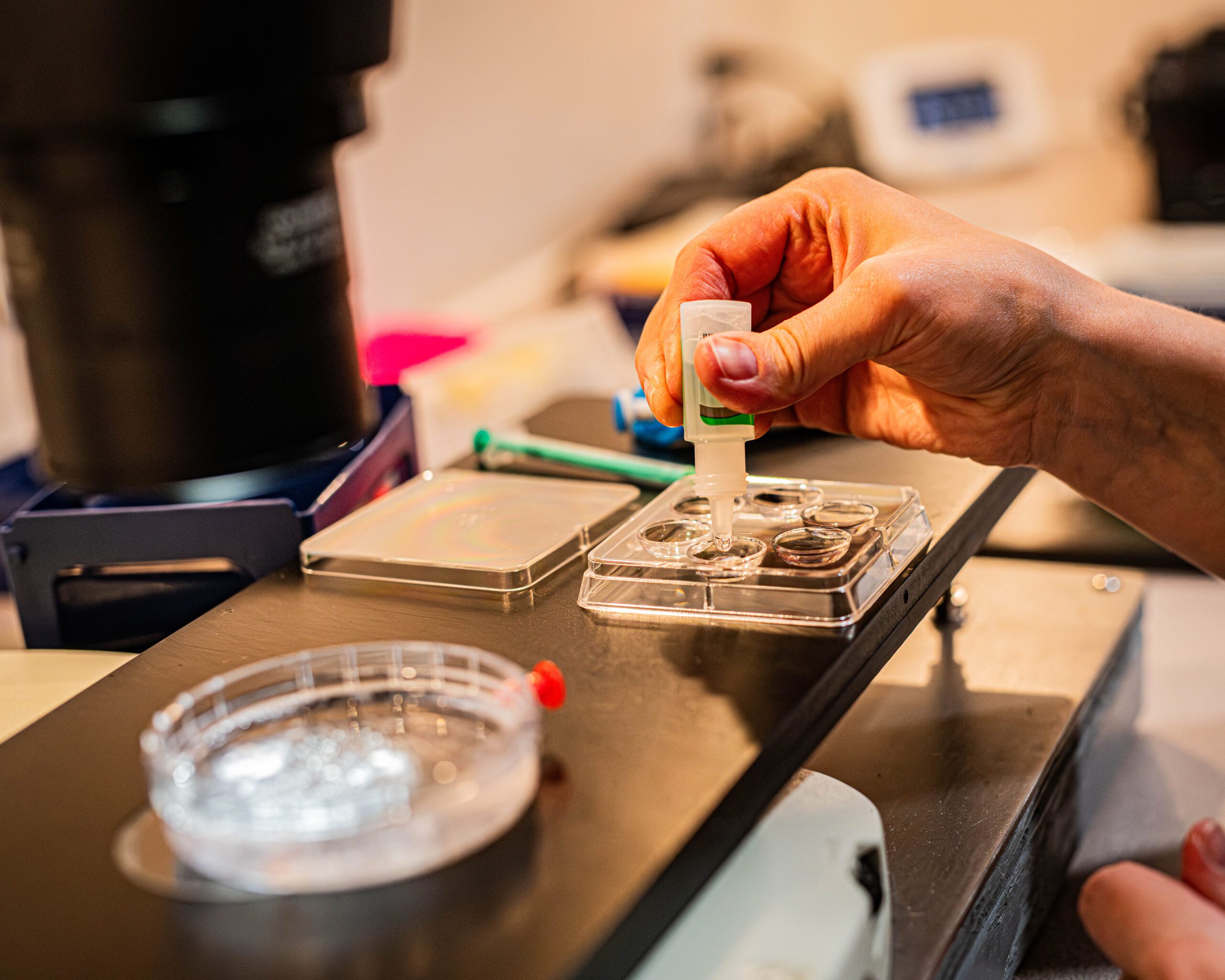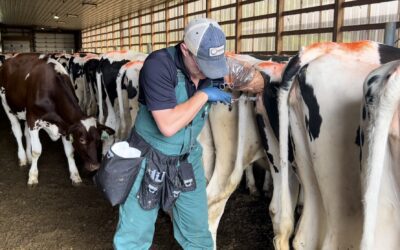We know there is tremendous variability in flush results between donors. According to the American Embryo Transfer Association (AETA) the average viable embryos reported from dairy donors last year was 6.3 per flush. It has been reported that 24% of donors will produce no viable embryos and that 30% of donors will contribute approximately 70% of the embryos to this average.
There are inherent factors to the donor which are out of our control; for example her age, breed and her genetic potential to respond to a superovulatory protocol. For instance, the size of the follicular reserve and overall fertility of donors is a heritable trait within certain pedigrees. It is apparent that not all donors are physiologically capable to respond to our artificially induced superovulation programs and that there can be a strong genetic association with fertility.
Troubleshooting the donors which produce no viable embryos (nearly 25% of them) and the other subgroup of donors who produce below average is the challenging part for ET practitioners, but one that can often be improved with a combination of donor and hormonal management techniques.
Reproductive performance of donors becomes more sensitive to environmental stress compared to non-donor herd mates, since we are asking them to produce many embryos, not just one at a time, and therefore they may serve as a sentinel indicating deeper issues within the herd.
Nutritional/Metabolic Conditions
The most common nutritional and metabolic condition influencing our adult dairy donors today is lactation itself. Lactating donors will typically have their best flush while still early in their lactation, before peak milk and the negative energy balance (NEB) really drags them down. If this window is missed, you may not have another flush as productive until late lactation when she has regained her positive energy balance and her body condition as well as ovarian function and oocyte quality is improving.
As producers are selecting younger heifers as donors, they may experience the same nutritional and metabolic concerns of NEB, but due to a growth component. Long term management of body condition is critical, yet can be challenging, especially with dry donors on a prolonged flush program. Over-conditioned cows are more insulin resistant than thin cows. This leads to an increase in body fat mobilization which can have negative effects on fertility.
Perhaps the most consistently proven and often overlooked association between nutrition and impaired reproduction is that of diets high in crude protein, especially ruminally degradable protein. High blood urea nitrogen levels (BUN) and/or milk urea nitrogen (MUN) is an infertility risk. The energy cost of the liver detoxifying excessive ruminal ammonia into urea can decrease the pH of the reproductive tract, which affects sperm transport and the uterine secretions which support the growing embryos.
As many breeders are focusing on reducing the generation interval to accelerate genetic progress, nutritionally accelerated growth programs to achieve early onset to puberty are becoming more prevalent in donor heifer programs. The caveat is that these feeding programs typically contain higher protein levels as well. I would recommend working closely with your veterinarian and nutritionist if you are hoping to walk such a tight rope in balancing accelerated growth and achieving successful flush results with your donor heifers.
Season and Weather Conditions
Extreme temperature exposure, both hot and cold can be major issues. Heat stressed donors may fail to ovulate, or frequently yield non-viable embryos. Interestingly however, sometimes we see embryos originating from heat or cold stressed donors which may actually continue to develop, only to die during the critical stages of implantation. This is one of the many variables which can cause an entire clutch of embryos frozen to receive high quality grades by the veterinarian at the time of freezing but go on to create poor pregnancy rates once thawed and transferred.
Our International Embryo Transfer Society staging and grading system is based purely on visual assessment parameters and we are unable to evaluate the true viability of the embryo in the field from a metabolic or biological standpoint. Therefore donor housing facilities and heat abatement strategies are vital to any successful donor management program.
Recovery Failure
Even when there is a good ovarian response and stimulation, many follicles may fail to ovulate, or incompletely ovulate, leaving the oocyte trapped within the follicle. Upon microscopic examinations, the oocyte has even been seen to remain within a corpus luteum at times.
The fimbria, finger-like projections of the oviduct, may fail to sweep up the oocytes as they are ovulated and funnel them down into the oviduct. This is especially common if the ovary is greatly expanded from a large stimulation since the fimbria will have difficulty reaching around all aspects of the ovary to recovery the oocytes prior to them escaping out into the abdominal cavity.
Physical decomposition of the embryo or “embryolisis” also may occur due to infection. Also adhesions may be present that would impair oviductal transport by physically blocking the lumen or by preventing the coordinated peristaltic contractions which would normally deliver the oocyte into the uterus.
Outside of the physical skill and manual dexterity of the veterinarian performing the flush procedure, there also are ample opportunities to lose the embryo during the actual flush process. Since the bovine embryo only measures around 160 microns it may not be dislodged from the extensive uterine endometrial folds, become entrapped within mucous or could become stuck in a crack, seam or joint somewhere along the catheter, flush tubing and filters.
The role of Stress and Cortisol
Research has shown that donor cows administered high doses of cortical steroids, such as dexamethasone, prior to initiating a flush protocol may completely fail to stimulate. The same scenario occurs naturally when a donor is exposed to other stressful situations if it causes her to release her own stress hormone – called cortisol. Cortisol will suppress ovarian function. Depending on the degree, this may lead to a low or failed stimulation.
Some other common conditions which can cause elevations in cortisol include pain, disease, injury, trucking, pen moves or restructuring of the social group. These conditions might not completely shut down the ovaries from stimulating unless severe or chronic in nature, but if we are aware of creating a low stress environment for donors within 60 days of enrollment in an advanced reproduction program results will be maximized.
These are some of the most common variables which can influence the success of a flush. Still other factors to consider include semen quality, immune function, endocrine disorders and diseases or abnormalities of the reproductive tract.
There are ample opportunities to push your embryo production upward if you can identify which factors might be plaguing your embryo production system and then effectively address them with your ET veterinarian, nutritionist and other consultants. Breeders who have mastered the management of all these variables will consistently yield outstanding results and can push these averages upward of 9 viable embryos per flush but it takes extreme dedication, attention to detail and probably a lot of difficult lessons along the way………..otherwise known as experience.
For more information, contact Dr. Nate Dorshorst by email: nate.dorshorst@GenOvationsET.com.




